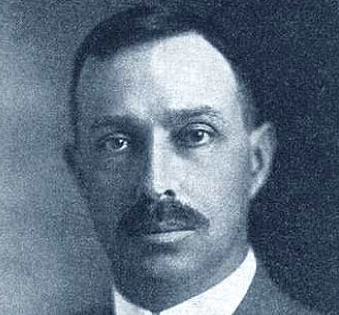
ローランド・ディクソン
Roland Burrage Dixon, 1875-1935

☆ ローランド・バレイジ・ディクソン(1875年11月6日 - 1934年12月19日)は、アメリカの文化人類学者である。 生い立ちと教育:1897年にマサチューセッツ州ウスターで生まれた彼は、ハーバード大学を卒業し、同校で人類学の助手として残り、1900年に博士号を 取得し、その後、講師、1906年以降は助教授、1915年には教授に昇進した。ディクソンは、そのキャリアのすべてをハーバード大学で過ごした。ピーボ ディ博物館:1904年、ディクソンはハーバード大学のピーボディ博物館の図書館長に就任し、世界で最も「包括的かつ機能的な人類学図書館」の創設に貢献 したと評価されている。 1909年にはピーボディ博物館の事務局長となり、1912年には民族学の学芸員となった。
| Roland Burrage Dixon
(November 6, 1875 – December 19, 1934) was an American anthropologist. Early life and education Born at Worcester, Mass, in 1897 he graduated from Harvard University, where he remained as an assistant in anthropology, taking the degree of Ph. D. in 1900 and then serving as instructor and after 1906 as an assistant professor, rising to professor in 1915.[1] Dixon spent his entire career at Harvard. Peabody Museum In 1904, Dixon became Librarian of Harvard's Peabody Museum and has been credited for creating one of the most "comprehensive and functional anthropological libraries in the world".[1] In 1909 he became the Peabody Museum's Secretary and in 1912 its Curator of Ethnology. |
ローランド・バレイジ・ディクソン(1875年11月6日 -
1934年12月19日)は、アメリカの文化人類学者である。 生い立ちと教育 1897年にマサチューセッツ州ウスターで生まれた彼は、ハーバード大学を卒業し、同校で人類学の助手として残り、1900年に博士号を取得し、その後、 講師、1906年以降は助教授、1915年には教授に昇進した。[1] ディクソンは、そのキャリアのすべてをハーバード大学で過ごした。 ピーボディ博物館 1904年、ディクソンはハーバード大学のピーボディ博物館の図書館長に就任し、世界で最も「包括的かつ機能的な人類学図書館」の創設に貢献したと評価さ れている。[1] 1909年にはピーボディ博物館の事務局長となり、1912年には民族学の学芸員(キュレーター)となった。 |
| Influence of Franz Boas Dixon studied linguistics and ethnology under Franz Boas after working with Fredric Ward Putnam to obtain his PhD at Harvard.[2] Dixon worked as a member of Boas's Jesup North Pacific Expedition, more specifically with the Huntington Expedition during the 1899-1905 field seasons with Native American groups in northeastern California. Dixon's early papers represent some of the earliest work inspired by Boas' views on culture. However, Boas did not fully articulate his views on culture until 1911, thus Dixon's work is less influenced by Boasian views than that of many of Boas' later students. Indeed, Boas and Dixon's views of culture clashed in numerous instances, in particular, over whether modern 'Stone Age' cultures could be used as analogs for prehistoric archaeological cultures. Boas was strongly opposed to this view. Dixon's approach towards cultures was geographic in orientation, and generally viewed cultures as static entities, with change primarily being induced by migration. Dixon's geographical-historical approach was not taken up by any later anthropologists. |
フランツ・ボアスの影響 ディクソンは、フレデリック・ウォード・パトナムとともにハーバード大学で博士号を取得した後、フランツ・ボアスの もとで言語学と民族学を学んだ。[2] ディクソンは、ボアスのイエスプ・ノースパシフィック探検隊の一員として、特に1899年から1905年のフィールドシーズンにはカリフォルニア州北東部 のネイティブアメリカン集団とともに、ハンティントン探検隊の一員として働いた。ディクソンの初期の論文は、ボアスの文化観に影響を受けた最も初期の研究 のひとつである。しかし、ボアズが文化に関する自身の考えを明確に表現するようになったのは1911年になってからであり、ディクソンの研究は、ボアズの 多くの後進の研究者たちよりもボアズの考えの影響をあまり受けていない。実際、ボアズとディクソンの文化観は数多くの場面で衝突しており、特に、現代の 「石器時代」文化を先史時代の考古学的文化の類似例として使用できるかどうかという点で意見が対立していた。ボアズは、この見解に強く反対していた。ディ クソンの文化に対するアプローチは地理的なものであり、一般的に文化は静的な存在と見なされ、変化は主に移住によって引き起こされると考えられていた。 ディクソンの地理的歴史的アプローチは、その後のどの人類学者にも受け入れられることはなかった。 |
| Collaboration Dixon was fellow Boas student Alfred Kroeber's closest professional colleague from 1897 until about 1906. They coordinated closely, published a number of papers jointly, and had an explicit agreement not to duplicate one another's work, Dixon working on languages and cultures in northeastern California and the northern Sierra Nevada, Kroeber in the remainder of the state.[3] |
共同作業 ディクソンは、1897年から1906年頃まで、同じくボアス学派の学生であったアルフレッド・クロバーの最も親しい仕事上の同僚であった。二人は緊密に連携し、多くの論文を共同で発表し、お互いの仕事を重複させないという明確な合意をしていた。ディクソンはカリフォルニア州北東部と北部のシェラネバダ山脈の言語と文化を研究し、クロバーは州の残りの地域を担当した。[3] |
| Travel and field work Dixon later travelled to . He also carried out ethnographic research in Siberia and Mongolia (1901); New Zealand, Tasmania, Australia, and Fuji (1909); Mexico (1910); Himalayas, Assam and Upper Burma, the Malay Peninsula and Java, China and Japan (1912-13).[1][4] |
旅行および現地調査 ディクソンはその後、旅行した。また、シベリアとモンゴル(1901年)、ニュージーランド、タスマニア、オーストラリア、フィージー(1909年)、メ キシコ(1910年)、ヒマラヤ、アッサム、ビルマ北部、マレー半島、ジャワ、中国、日本(1912年~1913年)で民族誌学の調査を行った。[1] [4] |
| Recognition In 1910, Dixon was elected to the American Philosophical Society.[6] He was vice president of the American Academy of Arts and Sciences in 1910–1911 and president of the American Folklore Society from 1907 to 1908.[7] He was professor at Harvard after 1916 and member of the American Commission to Negotiate Peace (1916–1918) in Paris.[1] Professor Dixon was a contributor to anthropological and ethnological journals. Reputation Obituaries by fellow anthropologists ascribed to Dixon an icy and demanding personality, with an attitude of "unsympathetic impartiality, of ruthless condemnation, or of detached approval."[8] |
認知 1910年、ディクソンはアメリカ哲学協会の会員に選出された。[6] 1910年から1911年にかけてはアメリカ芸術科学アカデミーの副会長、1907年から1908年にかけてはアメリカ民俗学会の会長を務めた。。 1916年以降はハーバード大学の教授となり、パリではアメリカ平和交渉委員会(1916年~1918年)の委員を務めた。[1] ディクソン教授は人類学および民族学の学術誌に寄稿していた。 評判 同僚の人類学者による死亡記事では、ディクソンの性格を「冷淡な公平さ、容赦ない非難、あるいは突き放した賛成」という態度を持つ冷淡で要求の多い人物と評している。[8] |
| Selected works Maidu Myths (1902) The Chimariko Indians and Language (1910) Maidu Texts (1912) Oceanic Mythology [1] (myths of the Indonesian, Oceanian, Australian region, published in 1916) Racial History of Man (1923) Archive Dixon's ethnology and also his lecture notes and class materials are held at the Harvard University Archives.[1] |
主な著作 マイドゥ族の神話(1902年 チマリコ・インディアンと言語(1910年 マイドゥ族のテキスト(1912年 海洋神話[1](インドネシア、オセアニア、オーストラリア地域の神話、1916年出版 人類の民族誌(1923年 アーカイブ ディクソンの民族学および講義ノートや教材は、ハーバード大学アーカイブズに保管されている。[1] |
| https://en.wikipedia.org/wiki/Roland_Burrage_Dixon |
|
リ ンク
文 献
そ の他の情報
Copyleft, CC, Mitzub'ixi Quq Chi'j, 1996-2099
☆
 ☆
☆